Photo

This is possibly the strangest drink I’ve ever had. It’s called mote con huesillo and it’s a sweet summer-time drink made with dried peaches cooked in sugar, water and cinnamon. It’s served with cooked husked wheat that you eat with a spoon. I have to say it’s a very strange combination though the taste itself is nice - kind of tastes like the syrup you get from canned peaches, which I always used to drink as a child.
0 notes
Text
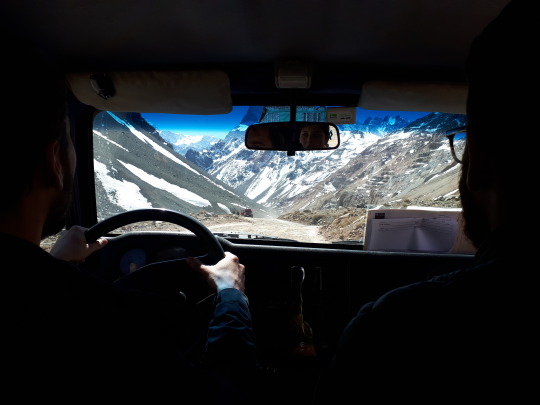
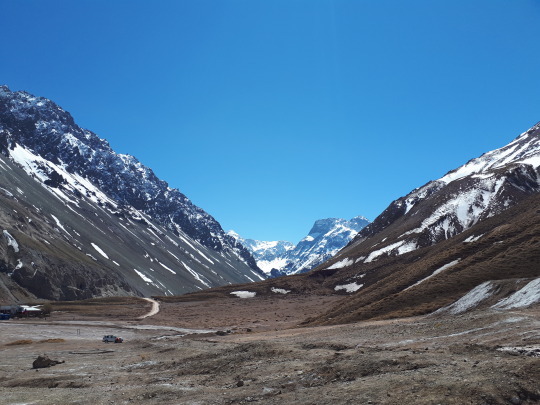




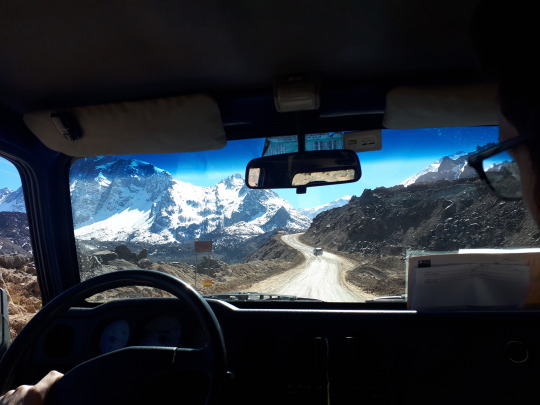

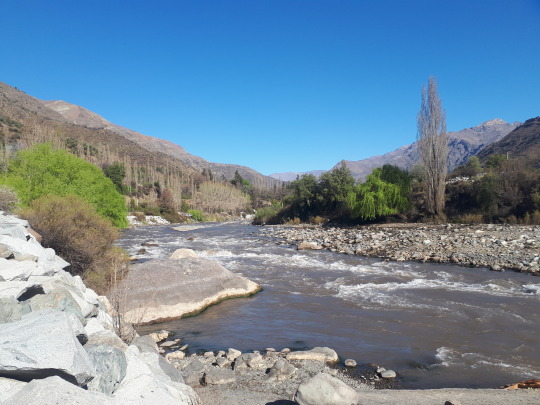
A visual summary of my first encounter with the Andes in Cajón del Maipo. The thermal baths were amazing, with pools of up to 60C! It's still winter here so it was freezing outside but lovely once you got in the water. Also saw an active volcano and learnt that you can climb to the top and see the lava inside. Next trip idea?
1 note
·
View note
Text
Fiestas Patrias
This week we are celebrating Fiestas Patrias, the national holidays that celebrate Chile and everything Chilean. It’s the biggest event of the year here, surpassing Christmas or New Year’s. Unlike other South American countries, Chile does not celebrate the carnival, so Fiestas Patrias really is the highlight of the year here. During this time people listen to traditional Chilean music, dance cueca and throw a lot of BBQs. Most people leave Santiago for these few days (this week was particularly lucky with a five day break!) to spend the fiestas with their families. Santiago has been so empty, the streets are completely deserted. I have to say that taking the metro has definitely been a much more enjoyable experience over the past couple days.
Yesterday I had the chance to experience a Chilean fonda, a kind of fair/festival where all the celebrations happen. There’s a lot of food, music, cueca, but also rodeo and traditional games, like hopscotch or sack races. The whole thing has a very country/cowboy feel to it, with people wearing hats and ponchos. Some fondas are more family-oriented and take place solely during the day, while others continue late into the night. Either way you are sure to find lots of BBQ meat, especially on skewers (known as anticuchos). Choripán, or rather chorizo hot dogs are also very popular and their name combines the two main ingredients: chorizo + pan (bread). People also eat a lot of empanadas, filled with either beef or chicken. Either way, the fondas are not vegetarian (or diet) friendly.

However, I think the most exciting part of the fiestas are the drinks! Or rather, one drink in particular. It’s called terremoto (literally meaning earthquake!) and I have to say it did not sound that great to begin with. It’s a mixture of cheap white wine, grenadine and... pineapple ice cream. I was sceptical that such a combination could taste good, but it is actually delicious! And you can drink a lot of it very quickly, until you stand up and realise why the drink is called terremoto... We still have three days to go, so plenty of time for a few more earthquakes!

3 notes
·
View notes
Text
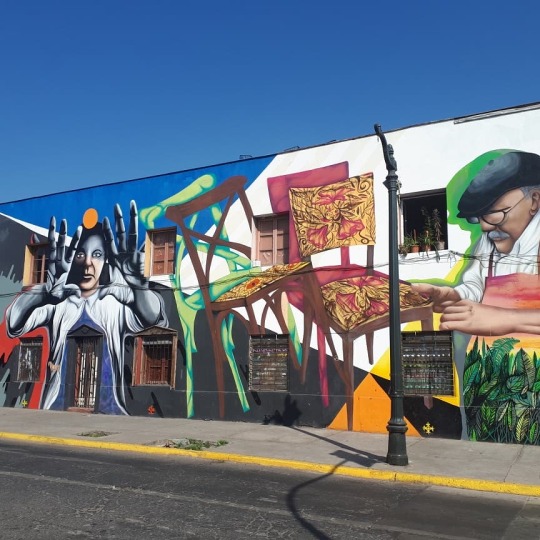

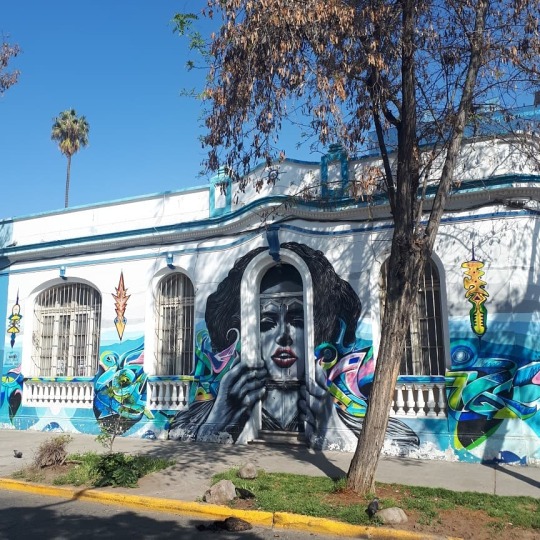
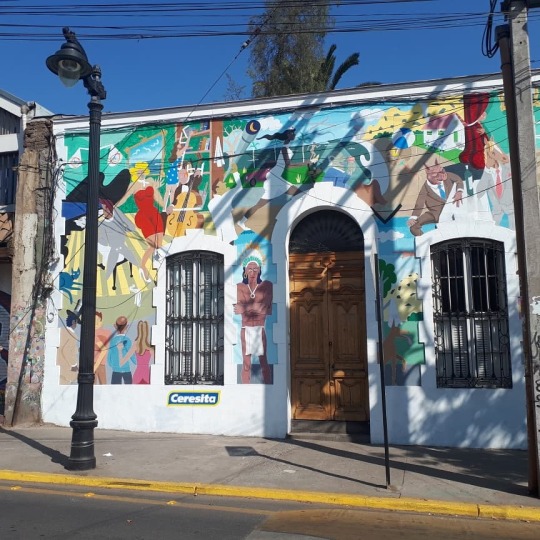
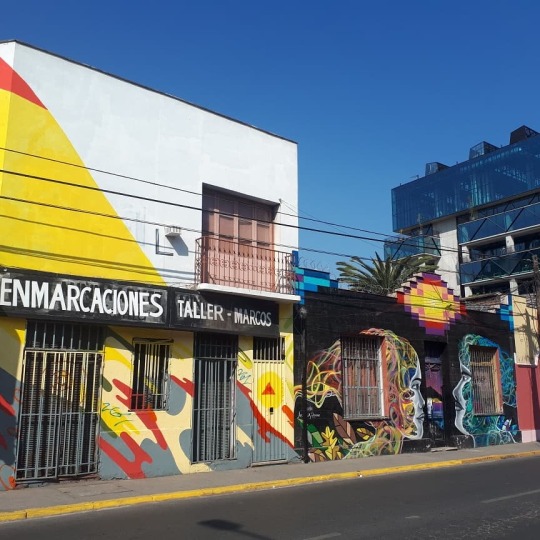
Sunday afternoon stroll through the colourful neighbourhood of Barrio Bellavista
0 notes
Text
10 days in 10 foods
Travelling is all about new flavours and I have spent my first ten days in Santiago exploring the local cuisine. Here’s what I have discovered so far:
1. Bread - it was a surprise for me to find out that Chile is one of the biggest consumers of bread in the world. I was expecting tortilla wraps, but it turns out that I am more likely to get a good old sandwich here. My favourite type of bread so far has been pan de hallulla, which is quite dense and round, making it a perfect fit for tomato slices.
2. Hot dogs - known here as completos, hot dogs are one of the most popular snack foods, sold on every corner. The most common is completo italiano, served with tomato, avocado and mayonnaise, representing the colours of the Italian flag.
3. Coffee - or rather, lack thereof! Even though many people associate South America with coffee, Chileans are actually more into tea or mate. There’s not too many cafés around and some only serve coffee from a dispenser. Instant coffee is also big here but fortunately you can buy ground coffee beans in all supermarkets.
4. Avocado - this should have perhaps been placed at the top of the list, as I have eaten avocado every day since I got here. They really are the staple of Chilean cuisine and accompany most dishes, either as one of the ingredients or salad. Interesting fact: while most Spanish-speaking countries refer to avocado as aguacate, in Chile it is known as palta.
5. Chirimoya - known in English as custard apple owing to its creamy texture, this fruit was a completely new flavour for me. Mark Twain described chirimoya as “the most delicious fruit known to men”, and while that might have been a bit of an exaggeration, it does taste pretty good! You can also get chirimoya ice cream, which is lovely.
6. Ice cream - while we’re already on this topic (my favourite food group), let me just say that Chileans know how to make good ice cream.
7. Sushi - I’m not sure why, but sushi is everywhere in Santiago! I was surprised to see how popular it is here. Apparently Chile consumes the most sushi out of all Latin American countries and it is one of the most popular take-out foods.
8. Empanadas - these little pastry parcels come filled with meat, cheese or vegetables and are a very popular snack here. One of the most common type here is called empanada de pino, which is filled with beef, onions and hard-boiled egg.
9. Manjar - if you have a sweet tooth, you will really enjoy manjar, the Chilean version of dulce de leche. It’s made by slowly heating milk and sugar, and it’s sure to satisfy any sugar craving! (Side note: everything in Chile is about five times sweeter than in Europe)
10. Ceviche - a dish of raw fish (and sometimes prawns) cured in lime or lemon juice and spiced with coriander, chopped onions and chili peppers. Although ceviche originates from Peru, it is widely served here in Chile.
0 notes